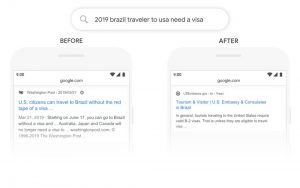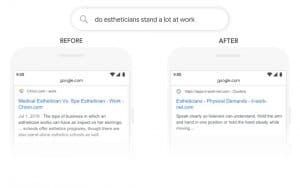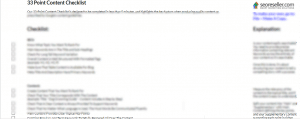The need to constantly improve our current digital landscape allows for updates to pop up at unexpected times. The new Google BERT or “Bidirectional Encoder Representations from Transformers” is proving to be the right step towards innovation.
You might be wondering, “Didn’t Google just update its core algorithm this June?” That’s only five months ago! So, what is this new Google BERT algorithm update all about?
At its core, it’s a new system that Google rolled out to make search queries more accurate. Instead of the search engine running on keywords, it can detect the search intent of the user better through the typed phrase.
This does not mean that you should only optimize for long tail. This means you should do more and provide a richer context so that Google can precisely understand and better connect search queries to existing keywords in your site.
This eliminates low-quality content and quickly impacts the precision of answers that show up on the Google search results.
For example, you’re searching for: “Italian restaurant serving homemade pasta”. The first topic that shows up on Google search is “How to Make Your Own Italian Pasta at Home”.
It has the same keywords to what you’re looking for, but the information isn’t exactly what you need.
Example 1:
In this example, Google shows how the search results change when a user is looking for information about traveling to the US vs. from the US.
Example 2:
In this example, the intent of the searcher is to know about the physical demands of the job. Before BERT, Google identified the word “stand” and matched it with “stand-alone”, which doesn’t resonate with what the user wants to know for this query.
Notice how the search became more accurate upon the implementation of Google BERT, delivering exactly what the searcher was looking for.
Users may not take immediate notice on how efficient the update is, but for hardworking digital marketers, it completely changes the game.
This filters out second rate content from the real deal and can lead even more people to the marketer’s webpage unlike before. Better keywords and phrases are used, page traffic will increase, and websites get the right audience! It’s a gamechanger in the digital industry, more specifically SEO.
This is why we’re providing you with another Content Quality Checklist, following Google’s own E-A-T (Expertise, Authoritativeness, Trustworthiness). Use this to quickly audit your SEO content.
The Google Bert update is far from perfect, though. It can still trip once in a while which happens to more locally based queries.
For example, if someone is looking for bass guitars in Florida and they enter the query “brand new bass in Florida” this appears:
The context of the query clearly means that the searcher is looking for bass – the musical instrument and not the fish, which is supported by the phrase ‘brand new’.
Meanwhile if you remove the location and only key in “brand new bass”, the results appear closer to what the user is looking for.
This is precisely why the constant need to tweak the algorithm is needed. The aim of future Google updates is to deliver more precise information to users.
Every search query made is an opportunity for a new lead and an opportunity to close a sale. Digital marketers need to optimize their content for users while knowing how to play by the rules of the algorithm.
Stay tuned for more updates about the digital marketing industry!





